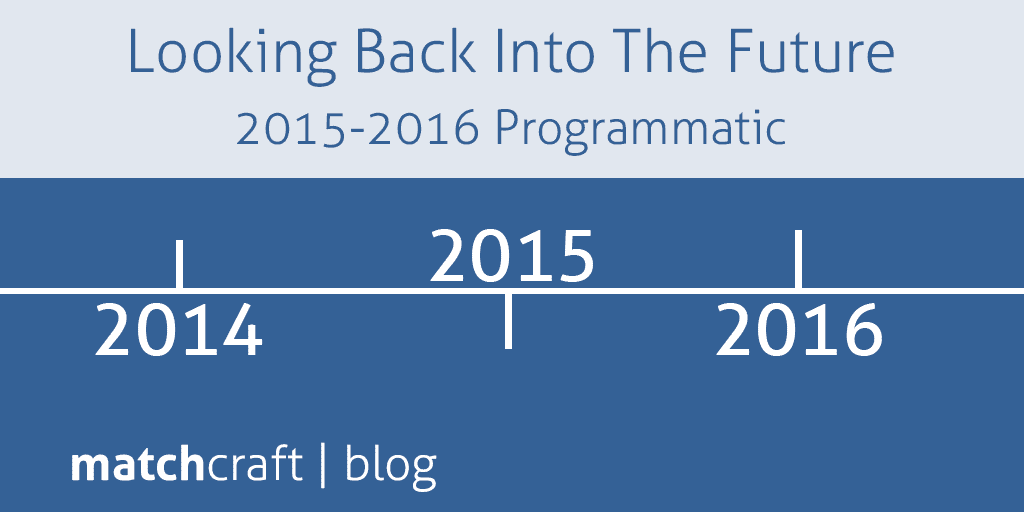Anyone in the digital advertising community knows that programmatic advertising is a force to be reckoned with. Media buyers are fully aware of programmatic advertising’s capabilities to efficiently buy ad inventory based on their target audience across a large scope of digital platforms. As 2016 builds its own momentum, let’s look at how programmatic advertising progressed in 2015 and what trends are to come in the upcoming year.
Programmatic Buying’s 2015 Progression and Trends
Programmatic Buying on Mobile Platforms
As mobile advertising continues to become more important in the digital landscape, buying mobile inventory programmatically continues to increasingly become a standard operation. In 2015, estimations of total programmatic ad spending was $9.33 billion, which was a 110.2 percent increase from 2014’s numbers. 2015 was also the first year that mobile surpassed desktop in programmatic spend.
Ad Fraud
Ad fraud was a hot topic in 2015 and continued to be a struggle for the digital advertising industry. According to a report by Distil Networks, $18.5 billion annually are lost to ad fraud, which is about $1 for every $3 spent on digital advertising.
The Interactive Advertising Bureau released their L.E.A.N. (Light, Encrypted, Ad-Choice Supported, Non-Invasive) Ads initiative to take away the emphasis of driving clicks and impressions, which is a suggested cause for ad fraud, and push for a better user experience overall.
Programmatic Advertising for Branding Purposes
Programmatic buying is generally a performance marketing objective. Its purpose is to drive the greatest return on investment. With the vast availability of behavioral and demographic data on digital platforms, brand marketers can combine “economic safety, useful data and creative alignment” to hone in on their branding goals. Programmatic can automate branding execution and make it “real-time.”
What to Look for in 2016
Programmatic Video Buying
Programmatic buying has mostly been applied to display advertising, although digital video as an ad platform has become increasingly important, especially with YouTube and Facebook being video powerhouses. Digital video will increasingly become a huge staple in programmatic advertising in 2016. As of February 2015, 67.1 percent of buyers bought video programmatically, which was 2 percent behind mobile and third overall. eMarketer estimates that programmatic video ad spending will increase 84.5 percent this year.
Out of Home and TV Buying
When discussing programmatic buying, it is almost always referring to desktop and mobile platforms. In 2016, out-of-home advertising and television will start to see more of their ads being bought in this fashion.
In October 2015, Google announced that it is trialing its DoubleClick technology in high-profile locations throughout London. While other platforms have this technology, Google outright dominates the digital advertising world. Google’s shift into a new market surely means interest will follow.
Traditional advertising will also begin to increase its programmatic output. While the increase will be gradual, Magna Global estimates that programmatic TV, which saw $2.5 billion of ad budgets in 2015, will increase to $10 billion by 2019. Expect a gradual increase in 2016 on television.
Snapchat and its API
Snapchat is already an enticing advertising platform with its large and engaged millennial user base. It will become even more intriguing as Snapchat is reportedly building its own application programming interface (API), which would “let partners start buying ads with more precision and frequency.”
This move is expected to be similar to Instagram’s API introduction in 2015. Such a move allows for advertisers to automate their ad buying on Snapchat, which is a platform that offers entertaining content via its Discover feature and a real-time experience through its Stories feature that advertisers can wrap their advertising around.
2016 will surely be an interesting year in the evolution of programmatic advertising. With so many digital platforms and an explosion of content, programmatic buying will surely be an operational standard across the board.
